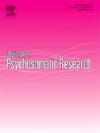腹部手术患者术前心理困扰与术后急性疼痛的关系
IF 3.5
2区 医学
Q2 PSYCHIATRY
引用次数: 0
摘要
目的分析腹部手术患者术前心理困扰症状及其与术后急性疼痛的关系。方法在巴西米纳斯吉拉斯州的一所大学医院进行前瞻性观察研究。样本包括118名医院选择性腹部手术项目的患者。采用医院焦虑抑郁量表(HADS)评估心理困扰症状。使用数字语言量表(NVS, 0-10分)从麻醉后护理单元入院到出院时测量疼痛水平。采用描述性统计和有序回归模型检测相关因素,显著性阈值为p <;0.05. 从麻醉后护理单元出院时的疼痛水平被认为是结果变量。手术后,50.8%的患者表现出焦虑症状(HADS-A≥8),16.1%的患者表现出抑郁症状(HADS-D≥8),14.4%的患者同时出现两种症状。麻醉后护理病房疼痛发生率(NVS >0)为40.3%。入院时,5.8%的患者报告中度至重度疼痛(NVS≥4),60分钟时增加到29.7%,出院时增加到22.1%。回归分析显示焦虑或抑郁(or = 4.49, p <;0.01)显著增加了经历更高程度疼痛的可能性,当两种症状同时存在时,这种可能性更大(OR = 10.19, p <;0.01)。此外,年龄越大(OR = 0.94, p <;0.01)和疼痛管理不当(OR = 7.67, p <;0.01)是出院时疼痛程度的显著预测因子。结论术前心理困扰,特别是同时存在焦虑和抑郁症状,显著增加腹部手术患者疼痛强度升高的可能性。本文章由计算机程序翻译,如有差异,请以英文原文为准。
Preoperative psychological distress and acute postoperative pain among abdominal surgery patients
Objective
To analyze preoperative psychological distress symptoms and their association with acute postoperative pain in patients undergoing abdominal surgery.
Method
Prospective observational study conducted at a University Hospital in Minas Gerais, Brazil. The sample included 118 patients in the hospital's elective abdominal surgery program. Psychological distress symptoms were assessed using the Hospital Anxiety and Depression Scale (HADS). Pain levels were measured using the numeric verbal scale (NVS, 0–10 points) from admission to discharge from the post-anesthesia care unit. Descriptive statistics and an ordinal regression model were utilized to detect related factors, with a threshold for significance established at p < 0.05. Pain levels at discharge from the post-anesthesia care unit was considered the outcome variable.
Findings
Preoperatively, 50.8 % exhibited symptoms of anxiety (HADS-A ≥ 8) and 16.1 % exhibited symptoms of depression (HADS-D ≥ 8), with 14.4 % presenting both symptoms. The prevalence of pain (NVS >0) in the post-anesthesia care unit was 40.3 %. At admission, 5.8 % of patients reported moderate to severe pain (NVS ≥ 4), increasing to 29.7 % at 60 min and 22.1 % at discharge. Regression analysis showed that anxiety or depression (OR = 4.49, p < 0.01) significantly increased the likelihood of experiencing higher pain levels, which was even greater when both symptoms coexisted (OR = 10.19, p < 0.01). Additionally, older age (OR = 0.94, p < 0.01) and inadequate pain management (OR = 7.67, p < 0.01) were significant predictors of pain levels at discharge.
Conclusion
Preoperative psychological distress, particularly the simultaneous presence of anxiety and depressive symptoms, significantly elevates the likelihood of heightened pain intensity in patients undergoing abdominal surgery.
求助全文
通过发布文献求助,成功后即可免费获取论文全文。
去求助
来源期刊
CiteScore
7.40
自引率
6.40%
发文量
314
审稿时长
6.2 weeks
期刊介绍:
The Journal of Psychosomatic Research is a multidisciplinary research journal covering all aspects of the relationships between psychology and medicine. The scope is broad and ranges from basic human biological and psychological research to evaluations of treatment and services. Papers will normally be concerned with illness or patients rather than studies of healthy populations. Studies concerning special populations, such as the elderly and children and adolescents, are welcome. In addition to peer-reviewed original papers, the journal publishes editorials, reviews, and other papers related to the journal''s aims.

 求助内容:
求助内容: 应助结果提醒方式:
应助结果提醒方式:


